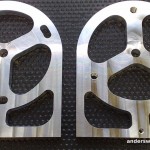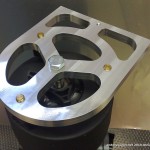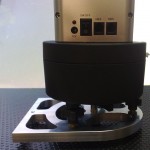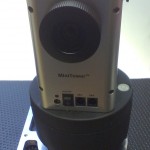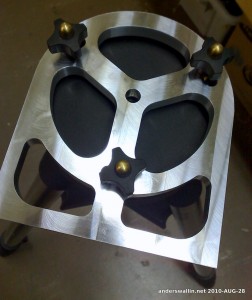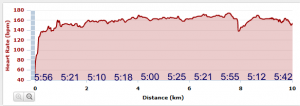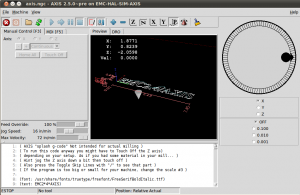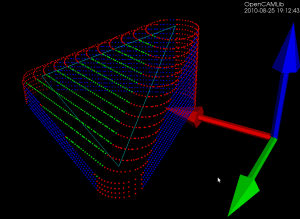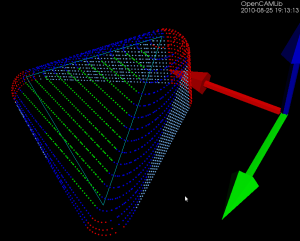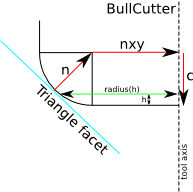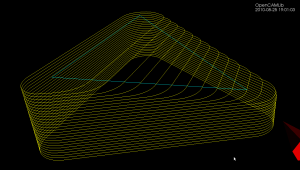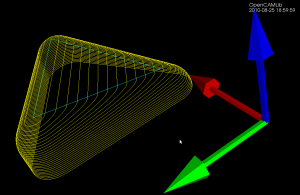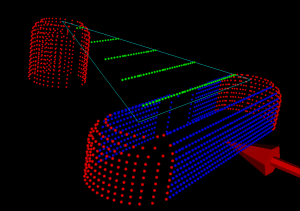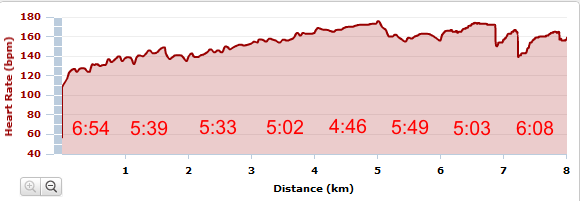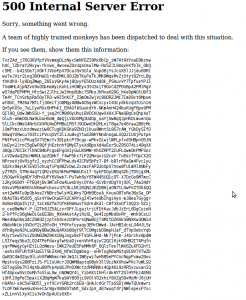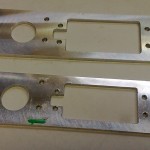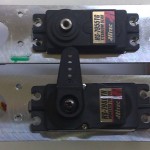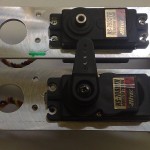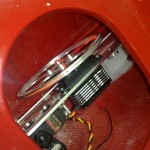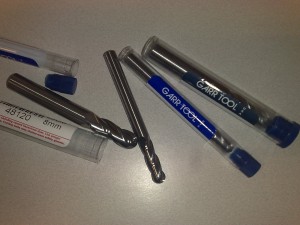This is the top plate of the wedge which will be tilted so that the alt/az mount which is bolted to it has its azimuth axis pointing towards the celestial north pole. The side-plates will have to wait until next weekend.
Equatorial wedge – base plate
I'm building an equatorial wedge which will transform my new alt/az goto-mount into an equatorial mount. This is the first part which attaches to the tripod. Two smaller side plates will be bolted to this plate and support a similarly shaped tilted plate to which the alt/az head attaches. The design is similar to the "mega wedge pro" (how about that for a product name!).
Friday ten
AXIS with PyVCP jogwheel
By popular demand, an example where a PyVCP jogwheel is hooked up to AXIS.
The files needed to make this work are in here: axis_jogwheel.tar
Radial tool projection
The basic operation when producing waterline-paths is to push the cutter along either the X or Y axis (red and green arrows) into contact with a triangle (cyan lines). That's done through three different functions, one each for the vertices, facet, and edges of the triangle. The vertex test (results shown as red dots) and the facet test (green dots) are straightforward to implement. The edge-test (blue dots) is more involved. The above figure is for a CylCutter where the edge-test is implemented through the vertex-test (thus red dots along the edges), but this figure for a BallCutter shows the colors better:
Blue dots show edge-contacts with the spherical part of the cutter, light-blue dots show edge-contacts with the cylindrical shaft of the cutter.
The vertex test requires only a radius(h) function that returns the radius of the cutter at height h. The facet test needs three parameters (n, nxy, c) for each cutter, which define where the cutter should be located relative to a point which lies on the facet. From the CC-point on the facet we go a distance n along the 3D unit-normal, then a distance nxy along a unit-normal in the XY-plane to find the cutter center. From the cutter center we go down along the z-axis by a distance c to find the CL-point.
Figuring out the (n,nxy,c) parameters for CylCutter and BallCutter is left as an exercise for the reader.
These points are then hooked up in the correct order to produce waterlines like this (CylCutter on the left, BallCutter on the right).
The edge-test for CylCutter reduces to a 2D problem of line-line intersections, while the edge-test for BallCutter can be done by intersecting a cylinder/tube around the edge with a line. The filleted/toroidal/BullCutter edge-test is much harder. Here I've just implemented the special case where the edge is horizontal and the solution is easy to find analytically. The general case where the edge slopes up or down requires an iterative solution to either a quartic or the offset-ellipse problem.
Links - 2010 Aug 26
- Summer Stand by mode (comic) -
- Canon Announces EOS 60D -
- Canon announces EF Extender 1.4x III and EF Extender 2x III -
- Canon EF 300mm f/2.8 L IS II USM and EF 400mm f/2.8L IS II USM -
- Canon EOS 60D DSLR announced and previewed -
- Canon EOS 60D Preview -
- Land steam record attempt -
- How-To: Take great photos of your projects -
- Animated GIFs show how mechanisms work -
- Hard Drive Clock -
- 128 vintage pocket calculators -
- In Silico -
Sunday 8k
One week after the marathon all but some minor soreness in the ankles is gone. Legs feel good again and tried an accelerating first 5k today.
There's a 10k event in two weeks, but I wonder how crowded it will be with walking and zigzagging for the first 1-3k? Under 50 minutes on the 10k would be nice.
youtube FAIL
Monster servo mount
The new high-torque winch servo is 44x22mm instead of the standard 40x20mm, so we made a new radio-plate for it today. The new plate has a bigger cut-out for the new servo, and is slightly wider. The boat will sail again next weekend so we will hear how the new servo works then.
